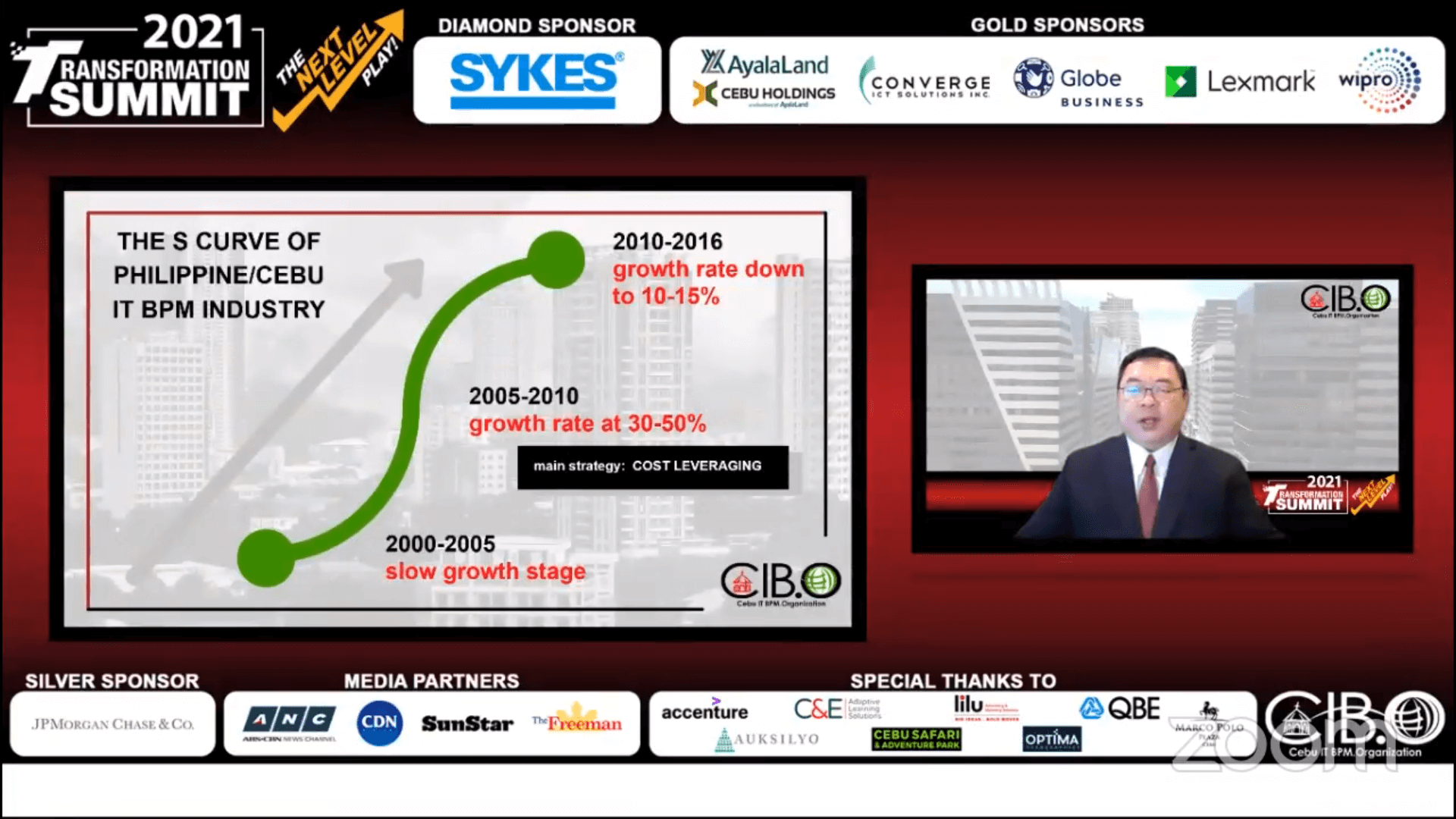Cebu’s main ICT organization CIB.O will embark on a simplified version of industry-government-academe collaboration or what is known as the “triple helix” approach to enable innovation and ecosystem development as a way of reversing the sluggish growth of the IT-BPM industry.
Cebu IT/BPM Organization (CIB.O) President Pert Cabataña said the streamlined structure will focus on top development priorities and specific targeted end results, which include arresting the slowdown and promoting the growth of the industry.
“A healthy ecosystem is the result of symbiotic interactions among members of that ecosystem. In an ideal helix-supported, innovation-driven ecosystem, the members of the triple helix play their respective roles while at the same time being open to cross playing the other’s roles,” he added during his talk “Innovation and Ecosystem Development: The Way Forward” at the last day of the 2021 Transformation Summit held from July 12 to 15.
An ideal collaboration among industry, government, and academe can be seen in Silicon Valley and it took them around five decades to achieve a prime triple helix ecosystem in place today. Closer to home, according to Cabataña, examples are South Korea, Taiwan, China, and even Vietnam seems to be catching up to achieve a similar status in two to three decades.
The Philippines, however, does not have the luxury of time, he pointed out, adding that CIB.O’s goal, aided by industry and academe collaborators, is to “achieve superiority in 10 years.”

Second slow growth phase
Now entering its third decade from its conception in 2000, Cebu’s IT-BPM industry is on its second slow growth stage, falling to 1.4 percent in 2020 from the high 30 to 50 percent it enjoyed in 2005-2010.
While the pandemic contributed to the industry’s performance, the slowdown had started before then: down to 10-15 percent in 2010-2016 and falling further to 7.1 percent in 2019.
Cabataña explained that this pattern of surge and contraction is a natural business phenomenon called the “S curve”. A business or industry typically starts slow, gains momentum and accelerates, and goes on a downturn when it reaches a critical mass of players and saturates the market. There are three possible scenarios when the second slow growth stage happens: the industry sees renewal, plateaus, or declines.
He cited the country’s semiconductor and electronics manufacturing business as an industry that has plateaued after going through a fast growth stage in the 1990s and pointed to the declining furniture exports that shrunk down to less than 50 players from its peak of 250 as another example.
“The common causes for stagnation and decline are very well known, it’s the lack of innovation and absence of a strong ecosystem,” he pointed out.
Next Level Play
CIB.O’s analysis of existing IT-BPM industry segments and their market potential showed the best battlegrounds for innovations will be on robotic automation processes for the following: health system management, insurance, general finance, accounting, and operations as well as e-governance.
As a consequence, Cabatana said they have identified government agencies and universities that will be collaborating with CIB.O member companies on the different segments. It will entail the participation of such schools as the University of San Carlos, University of San Jose Recoletos, University of Cebu, and Cebu Institute of Technology-University and government agencies like the Department Science and Technology, Department of Trade and Industry, and Department of Information Communication Technology together with local government units in Cebu.
The role of CIB.O’s Super Strat 8 will be crucial, too, particularly the innovation and ecosystem development as well as talent committees in accelerating the acquisition of cutting-edge technology, developing domain expertise and other essential soft skills. The organization is negotiating to have a branch of the National Center for AI Research, which is a component of the Philippines National AI Strategy recently launched by DTI, put up in Cebu IT Park.
“We realize that there is an urgent need to provide avenues where engineering tech faculty and students do collaborative projects with business faculty and students. Unicorns were not made by techies alone but are products of successful collaborations between techies and business model innovators,” he stressed, adding that part of the initiative will be to count the local unicorns that the industry can produce. India already has 62, Indonesia has 2, and Vietnam has 1.
Other measurements of success will be increasing the number of new local players, as they are proven to be the source of India’s strength.
Growing potential members and investors, fighting COVID-19 through health measures and acceleration of vaccination programs, international promotion of Cebu as investment destination, generating funds and securing grants to support tactical and strategic projects, expanding investments to the countryside by improving transportation and telecommunication services, speeding up LGU permit processing, and ensuring ease of doing business are other objectives of the Super Strat 8 Committees.
